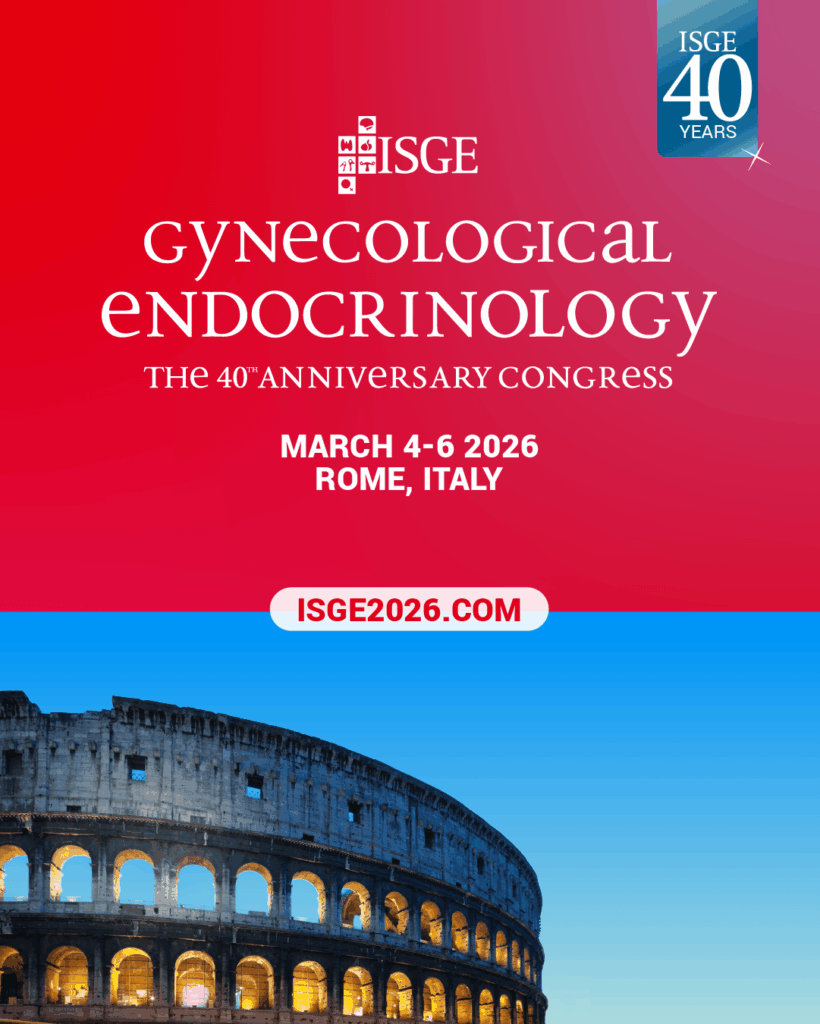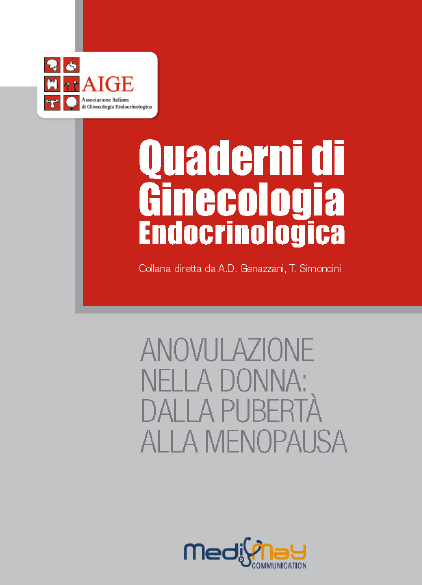-
Niki Mourouti, Christos Papavagelis, Petrini Plytzanopoulou, Meropi Kontogianni, Tonia Vassilakou, Nikolaos Malamos, Athena Linos, Demosthenes Panagiotakos
Dietary patterns and breast cancer: a case-control study in women
Eur J Nutrition DOI 10.1007/s00394-014-0742-8
Abstract
PURPOSE: Since dietary habits have been associated with breast cancer, the tested research hypothesis was the associations between food patterns, as derived through multivariate methods, and breast cancer.
METHODS: In a case-control study, Two-hundred and fifty consecutive, newly diagnosed breast cancer female patients (56 ± 12 years) and 250 one-to-one age-matched, healthy controls were studied. A standardized, validated questionnaire assessing various socio-demographic, clinical, lifestyle, and dietary characteristics was applied through face-to-face interviews. Factor analysis, with principal components method, was applied to extract dietary patterns from 86 foods or food groups consumption reported by the controls.
RESULTS: Three components were derived explaining 43 % of the total variation in consumption. Component 1 was characterized by the consumption of potatoes, red meat and its products, poultry and white meat, dairy products, use of margarine/butter in cooking or at the table, consumption of sausages, fried food as well as grilled meat or fish; component 2 was characterized by the consumption of whole grains, fruits, and vegetables; and component 3 was characterized by olive oil and fish consumption. After adjusting for various confounders, components 2 and 3 were favorably associated with the absence of having breast cancer [odds ratio (OR) 0.60, 95 % CI 0.47-0.75 and OR 0.81, 95 % CI 0.66-0.99, respectively], while component 1 was not significantly associated with the disease.
CONCLUSIONS: Adherence to healthy dietary patterns (including whole grains, fruits, and vegetables, olive oil, and fish) seems to be favorable in not having breast cancer, among middle-aged women.
-
Gerard Conway, Didier Dewailly, Evanthia Diamanti-Kandarakis, Héctor F Escobar-Morreale, Stephen Franks, Alessandra Gambineri, Fahrettin Kelestimur, Djuro Macut, Dragan Micic, Renato Pasquali, Marija Pfeifer, Duarte Pignatelli, Michel Pugeat, Bulent O Yildiz, and on behalf of the ESE PCOS Special Interest Group
The polycystic ovary syndrome: a position statement from the European Society of Endocrinology
Eur J Endocrinol 171 (4) P1-P29, doi: 10.1530/EJE-14-0253 First published online 21 May 2014
Abstract
Polycystic ovary syndrome (PCOS) is the most common ovarian disorder associated with androgen excess in women, which justifies the growing interest of endocrinologists. Great efforts have been made in the last 2 decades to define the syndrome. The presence of three different definitions for the diagnosis of PCOS reflects the phenotypic heterogeneity of the syndrome. Major criteria are required for the diagnosis, which in turn identifies different phenotypes according to the combination of different criteria. In addition, the relevant impact of metabolic issues, specifically insulin resistance and obesity, on the pathogenesis of PCOS, and the susceptibility to develop earlier than expected glucose intolerance states, including type 2 diabetes, has supported the notion that these aspects should be considered when defining the PCOS phenotype and planning potential therapeutic strategies in an affected subject. This paper offers a critical endocrine and European perspective on the debate on the definition of PCOS and summarises all major aspects related to aetiological factors, including early life events, potentially involved in the development of the disorder. Diagnostic tools of PCOS are also discussed, with emphasis on the laboratory evaluation of androgens and other potential biomarkers of ovarian and metabolic dysfunctions. We have also paid specific attention to the role of obesity, sleep disorders and neuropsychological aspects of PCOS and on the relevant pathogenetic aspects of cardiovascular risk factors. In addition, we have discussed how to target treatment choices based according to the phenotype and individual patient’s needs. Finally, we have suggested potential areas of translational and clinical research for the future with specific emphasis on hormonal and metabolic aspects of PCOS.
-
Ferruccio Santini, Paolo Marzullo, Mario Rotondi, Giovanni Ceccarini, Loredana Pagano, Serena Ippolito, Luca Chiovato, Bernadette Biondi
MECHANISMS IN ENDOCRINOLOGY: The crosstalk between thyroid gland and adipose tissue: signal integration in health and disease
Eur J Endocrinol 171 (4) R137-R152
Abstract
Obesity and thyroid diseases are common disorders in the general population and they frequently occur in single individuals. Alongside a chance association, a direct relationship between ‘thyroid and obesity’ has been hypothesized. Thyroid hormone is an important determinant of energy expenditure and contributes to appetite regulation, while hormones and cytokines from the adipose tissue act on the CNS to inform on the quantity of energy stores. A continuous interaction between the thyroid hormone and regulatory mechanisms localized in adipose tissue and brain is important for human body weight control and maintenance of optimal energy balance. Whether obesity has a pathogenic role in thyroid disease remains largely a matter of investigation. This review highlights the complexity in the identification of thyroid hormone deficiency in obese patients. Regardless of the importance of treating subclinical and overt hypothyroidism, at present there is no evidence to recommend pharmacological correction of the isolated hyperthyrotropinemia often encountered in obese patients. While thyroid hormones are not indicated as anti-obesity drugs, preclinical studies suggest that thyromimetic drugs, by targeting selected receptors, might be useful in the treatment of obesity and dyslipidemia.
-
Antonio García-Hermoso, Jose M Saavedra, Yolanda Escalante, Mairena Sánchez-López, Vicente Martínez-Vizcaíno
ENDOCRINOLOGY AND ADOLESCENCE: Aerobic exercise reduces insulin resistance markers in obese youth: a meta-analysis of randomized controlled trials
Eur J Endocrinol 171 (4) R163-R171
Abstract
Objective The purpose of this meta-analysis was to examine the evidence for the effectiveness of aerobic exercise interventions on reducing insulin resistance markers in obese children and/or adolescents. A secondary outcome was change in percentage of body fat.
Methods A computerized search was made from seven databases: CINAHL, Cochrane Central Register of Controlled Trials, EMBASE, ERIC, MEDLINE, PsycINFO, and Science Citation Index. The analysis was restricted to randomized controlled trials that examined the effect of aerobic exercise on insulin resistance markers in obese youth. Two independent reviewers screened studies and extracted data. Effect sizes (ES) and 95% confidence interval (CI) were calculated, and the heterogeneity of the studies was estimated using Cochran’s Q-statistic.
Results Nine studies were selected for meta-analysis as they fulfilled the inclusion criteria (n=367). Aerobic exercise interventions resulted in decreases in fasting glucose (ES=−0.39; low heterogeneity) and insulin (ES=−0.40; low heterogeneity) and in percentage of body fat (ES=−0.35; low heterogeneity). These improvements were specifically accentuated in adolescents (only in fasting insulin), or through programs lasting more than 12 weeks, three sessions per week, and over 60 min of aerobic exercise per session.
Conclusions This meta-analysis provides insights into the effectiveness of aerobic exercise interventions on insulin resistance markers in the obese youth population.
-
Nathalie Chabbert-Buffet, Nathalie Esber, Philippe Bouchard
Fibroid growth and medical options for treatment
Fertil Steril 2014;102: 630–9
Abstract
Although fibroids are common benign tumors, their impact on women’s quality of life can be considerable. The most frequent symptoms are uterine bleeding, resulting in anemia, and pelvic pain. Fibroids can be of genetic or hormonal origin or arise from intrauterine events. Current options for medical treatment include control of estradiol and progesterone production or action and are discussed in this review. Although curative treatment of fibroids relies on surgical strategies, the current trend is for uterine-sparing treatment to preserve fertility and avoid unnecessary surgery. Currently approved medical treatments include intrauterine progestin delivery to reduce uterine bleeding, GnRH analogues, and, more recently, selective progesterone receptor modulators to control uterine bleeding and reduce fibroid volume.
-
Jacques Donnez, Olivier Donnez, Marie-Madeleine Dolmans
With the advent of selective progesterone receptor modulators, what is the place of myoma surgery in current practice?
Fertil Steril 2014;102:640–8
Abstract
Uterine fibroids are the most common benign uterine tumors. This review examines the different management strategies, involving mainly surgery, and evaluates them in the light of new developments with selective progesterone receptor modulators. On the one hand, hysteroscopic and laparoscopic (or minilaparotomic) myomectomy is the treatment of choice in women who wish to preserve their uterus, and hysterectomy has long been considered the standard surgical approach in symptomatic women who no longer wish to conceive. On the other hand, recent studies have demonstrated the efficacy of ulipristal acetate in the medical management of myomas. Analyzing the respective advantages of both medical and surgical therapy, we propose new guidelines for the management of fibroids that take into account the most important symptoms (bleeding, infertility) and the age of the patients.
-
Amrita Patel, Minnie Malik, Joy Britten, Jeris Cox, William H. Catherino
Alternative therapies in management of leiomyomas
Fertil Steril 2014;102:649–55
Abstract
Leiomyomas are benign soft-tissue neoplasms that arise from smooth muscle. Relief of symptoms (abnormal uterine bleeding, pain, pressure) is the major goal in management of women with significant symptoms. For symptomatic myomas, hysterectomy is a definitive solution; however, there are emerging less-invasive options. Magnetic resonance imaging–guided focused ultrasound surgery, cryomyolysis, and temporary occlusion of the uterine arteries are treatment options that are minimally invasive interventions with the benefit of preserving the uterus. This review summarizes procedure techniques, eligibility, complications, and outcomes of these alternate therapies.
-
Kim Dreyer, Renée Out, Peter G.A. Hompes, Velja Mijatovic
Hysterosalpingo-foam sonography, a less painful procedure for tubal patency testing during fertility workup compared with (serial) hysterosalpingography: a randomized controlled trial
Fertil Steril 2014;102:821–5, doi: 10.1530/EJE-14-0067
Abstract
Objective: To determine whether hysterosalpingo-foam sonography (HyFoSy) is a less painful first line tubal patency test than serial hysterosalpingography (HSG).
Design: A two-center, prospective, open-label, randomized, controlled trial.
Setting: University hospital and teaching hospital.
Patient(s): 40 subfertile women, ages 18 to 41 years, with an indication for tubal patency testing as part of the fertility workup according to the Dutch Nederlandse Vereniging voor Obsteterie & Gynaecologie-guidelines.
Intervention(s): Tubal patency testing by HyFoSy versus serial HSG.
Main Outcome Measure(s): Visual Analogue Scale (VAS) pain scores during tubal patency testing.
Result(s): The median VAS score for pain perception during the HyFoSy procedure was 1.7 cm (interquartile range: 2.1) compared with 3.7 cm (interquartile range: 4.2) during HSG. The HyFoSy procedure also had a statistically significantly shorter procedure time compared with HSG, with a median of 5.0 minutes (interquartile range: 3.0) for HyFoSy versus 12.5 minutes (interquartile range: 16.0) for HSG.
Conclusion(s): The HyFoSy procedure is a less painful and less time-consuming tubal patency test compared with HSG.
Clinical Trial Registration Number: Netherlands National Trial Register NTR3457.
-
Mariko Miyashita, Kaori Koga, Masashi Takamura, Gentaro Izumi, Miwako Nagai, Miyuki Harada, Tetsuya Hirata, Yasushi Hirota, Tomoyuki Fujii, and Yutaka Osuga
Dienogest reduces proliferation, aromatase expression and angiogenesis, and increases apoptosis in human endometriosis
Gynecol Endocrinol, 2014; 30(9): 644–648
Abstract
Dienogest is a novel progestin that is highly selective for progesterone receptors and inhibits endometriosis. However, it remains unknown how the administration of dienogest to patients with endometriosis impacts on their lesion tissues. The aim of this study was to evaluate the in vivo effect of dienogest on endometriosis tissue. We collected endometrioma tissues from patients treated with dienogest (N¼7) or not treated (N¼11, controls). Cell proliferation, aromatase expression and blood vessel density were evaluated by staining for Ki67, aromatase
and the von Willebrand factor, respectively. Apoptosis was detected using the TUNEL assay. The proportion of Ki67 and aromatase positive epithelial cells was significantly lower in the dienogest group than in controls (p50.05, respectively). The number of TUNEL positive cells was significantly higher in the dienogest group (p50.05). The density of blood vessels in endometrioma was marginally lower in the dienogest group compared with controls (p=0.20).
Our study demonstrates that endometrioma taken from patients treated with dienogest show remarkable histological features such as reduction of proliferation, aromatase expression and angiogenesis, and increase of apoptosis. This study clarified the impact of dienogest on local histological events that explain its therapeutic effect on endometriosis.
-
Jana Vrbikova, Martin Hill, Michael Fanta
The utility of fasting plasma glucose to identify impaired glucose metabolism in women with polycystic ovary syndrome
Gynecol Endocrinol, 2014; 30(9): 664–666
Abstract
We evaluated the utility of impaired fasting plasma glucose as defined by ADA to identify women with polycystic ovary syndrome (PCOS) affected by impaired glucose metabolism (i.e. impaired fasting glucose, impaired glucose tolerance and diabetes mellitus). In 330 women with PCOS, according to ESHRE criteria, an oral glucose tolerance test was done. Impaired fasting glucose was present in 36 women (12%), impaired glucose tolerance in 29 women (8.8%) and diabetes mellitus in 10 women (3%), 4 of them have fasting glucose higher than 7 mmol/l. The combination of impaired fasting glucose and impaired glucose tolerance was seen in 5 women (1.5%). The sensitivity of impaired fasting glucose for the detection of impaired glucose tolerance was 24% and specificity 91.8%. When fasting glucose above 5.6 mmol/l was used as the screening criterion, 28/35 subjects (80%) would have been missed.
We conclude that fasting plasma glucose is not sufficiently sensitive for the detection of impaired glucose tolerance and diabetes mellitus type 2 in women with PCOS.
-
A. Ohannessian, A. Loundou, B. Courbiere, L. Cravello, A. Agostini
Ovarian responsiveness in women receiving fertility treatment after methotrexate for ectopic pregnancy: a systematic review and meta-analysis
Human Reproduction, Vol.29, No.9 pp. 1949–1956, 2014
Abstract
Study question: Does previous methotrexate (MTX) treatment for ectopic pregnancy (EP) have an effect on ovarian response in women
receiving fertility treatment?
summary answer: MTX treatment for EP does not seem to affect subsequent fertility treatment.
what is known already: MTX is commonly used to treat EPs that are diagnosed early. Previous studies have reported conflicting
results about its effect on subsequent fertility treatments.
study design, size, duration: This systematic review and meta-analysis included a total of 329 patients who had participated in 7 observational studies.
participants/materials, setting,methods: A search of the MEDLINE, EMBASE and PUBMED databases was conducted to identify studies about fertility treatments after MTX treatment for EP, published in English or French up to December 2013. Studies were eligible for inclusion only if they compared indicators of ovarian responsiveness during ART in the cycles before and after an injection of MTX for EP. The primary outcome measurewasthe numberof oocytes retrieved. Secondaryoutcomes included the basal serum FSH level, duration of stimulation, total gonadotrophin dose and serum E2 level on the day of hCG triggering.
main results and the role of chance: The mean number of oocytes retrieved during the cycles before and after the MTX treatment did not differ significantly (P ¼ 0.4). The comparisons before and after MTX treatment of the basal plasma FSH level, the duration
of stimulation, the total gonadotrophin dose used for stimulation and the estradiol level on the day ovulation was triggered did not find any significant differences.
limitations, reasons for caution: The literature on this topic is sparse, with few studies and even fewer of high methodological quality.
wider implications of the findings: These results indicate thatMTX to treat EP in infertile patients does not have any negative effect on their subsequent fertility treatment, but further studies should be performed before this result can be considered definitive.
-
Vaishali B. Popat, Karim A. Calis, Sophia N. Kalantaridou, Vien H. Vanderhoof, Deloris Koziol, James F. Troendle, James C. Reynolds, and Lawrence M. Nelson
Bone Mineral Density in Young Women With Primary Ovarian Insufficiency: Results of a Three-Year Randomized Controlled Trial of Physiological Transdermal Estradiol and Testosterone Replacement
J Clin Endocrinol Metab 99: 3418–3426, 2014
Abstract
Context: Women with primary ovarian insufficiency have significantly lower serum estradiol and T levels compared with regularly menstruating women. They also have significantly reduced bone mineral density (BMD).
Objective: The objective of the study was to evaluate the efficacy of hormone replacement in
maintaining BMD in these young women.
Design and Setting: This was a randomized, double-blind, single-center, placebo-controlled clinical trial at the National Institutes of Health clinical center (Bethesda, Maryland).
Participants: Young women with primary ovarian insufficiency participated in the study.
Interventions: We compared the effect of estradiol and progestin replacement (n = 72) vs estradiol, progestin, and T replacement (n=73) on BMD. We also compared findings with a contemporaneous control group of normal women (n = 70). All patients received transdermal estradiol (100 µg/d) plus oral medroxyprogesterone acetate 10 mg/d (12 d/mo) for a 3-month run-in period before being randomized in a double-blinded fashion to the addition of transdermal T (150 µg/d) or placebo.
Main Outcome Measure: Change in BMD at the femoral neck was measured by dual-energy x-ray absorptiometry.
Results: At screening, patients had significantly lower femoral neck BMD compared with control women (0.77 vs 0.81 g/cm2, P = .001) and did not differ in body mass index, age at menarche, or education level. Normal control women lost femoral neck BMD over the study period, whereas patients on estradiol and progestin therapy gained BMD; and at the end of the study period, femoral neck BMD of patients on estradiol and progestin therapy did not differ from that of control women (0.80 g/cm2 in both groups, P _ .9). The addition of T showed no further benefit (percentage change in BMD 3.9 vs 2.4, respectively, P = .9). Nonetheless, using a repeated-measures model, the T group achieved a mean BMD in the femoral neck 0.015 g/cm2 higher than the placebo group at 3 years (95% confidence interval -0.005 to 0.034, P = .13). Similar findings were observed in the lumbar spine BMD as well.
Conclusion: Long-term physiological transdermal estradiol replacement in combination with oral medroxyprogesterone acetate restores mean femoral neck BMD to normal in young women with spontaneous 46,XX primary ovarian insufficiency. However, the addition of physiological transdermal T replacement did not provide additional benefit.
-
Bernadette Biondi and Leonard Wartofsky
Treatment With Thyroid Hormone
Endocrine Reviews 35: 433–512, 2014
Abstract
Thyroid hormone deficiency can have important repercussions. Treatment with thyroid hormone in replacement doses is essential in patients with hypothyroidism. In this review, we critically discuss the thyroid hormone formulations that are available and approaches to correct replacement therapy with thyroid hormone in primary and central hypothyroidism in different periods of life such as pregnancy, birth, infancy, childhood, and adolescence as well as in adult patients, the elderly, and in patients with comorbidities. Despite the frequent and long term use of L-T4, several studies have documented frequent under- and overtreatment during replacement therapy in hypothyroid patients. We assess the factors determining L-T4 requirements (sex, age, gender, menstrual status, body weight, and lean body mass),the major causes of failure to achieve optimal serum TSH levels in under treated patients (poor patient compliance, timing of L-T4 administration, interferences with absorption, gastrointestinal diseases, and drugs), and the adverse consequences of unintentional TSH suppression in over treated patients. Opinions differ regarding the treatment of mild thyroid hormone deficiency, and we examine the recent evidence favoring treatment of this condition. New data suggesting that combined therapy with T3 and T4 could be indicated in some patients with hypothyroidism are assessed, and the indications for TSH suppression with L-T4 in patients with euthyroid multinodular goiter and in those with differentiated thyroid cancer are reviewed. Lastly, we address the potential use of thyroid hormones or their analogs in obese patientsandin severe cardiac diseases, dyslipidemia,and non thyroidal illnesses.






